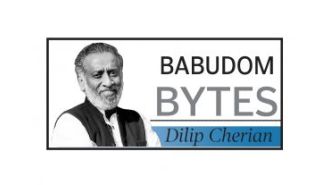Staying Independent
Possibly the most interesting running conversation I've been having with entrepreneurs lately is how they can keep their companies independent without having to go public and turn their cap table into a casino. There are a bunch of entrepreneurs thinking seriously about this issue and I've been thinking seriously about it too.
Of course if you bootstrap your business and never take outside investors then this is not an issue. You control the timing and the choice of exit and there are no investors to concern yourself with. But there are plenty of entrepreneurs who have built interesting businesses using outside capital – angel, seed, VC, or some other form – and they have a portion of their cap table that is seeking a return on their capital on some reasonable timetable.
The emergence of a vibrant secondary market may point to a solution. If one set of investors eventually cashes out to another set of investors who eventually cash out to another set of investors then you have a formula for staying independent while giving your investors liquidity over time.
To some extent this has already been happening in the buyout and private equity world. One financial buyer trades the asset to another financial buyer and so on and so forth. The venture capital industry could potentially adopt some of these practices while leaving the entrepreneur and their management team intact and in control.
Angels and early stage investors who have portfolios with high loss ratios might hold on to their strongest performers for five to ten times their money. Later stage investors who have much less downside risk might hold on for three to four times their investments. Companies could build enterprise value over time generating returns to their various stakeholders who might change over time.
Another possibility is leveraged recaps and possibly dividends. If you build a business with excellent cash flow, there will be cash that can be used to pay out dividends or used to service and pay down debt. Dividends are not tax efficient under US tax law. The Company will pay income taxes on its earnings and then the investors will pay taxes again on the dividends. That is why leveraged recaps are more attractive in the US. Instead of paying dividends, the Company borrows funds it can easily service and pay down over time and uses those funds to repurchase stock from its investors.
Both of these approaches (dividends and leveraged recaps) require that the Company have strong recurring cash flow that when multiplied by a cash flow multiple will provide a meaningful gain to the investors.
Let's look at a model of how this might happen. Let's say a company required $10mm of startup capital to get to breakeven. Let's say $3mm of it came in for 20% of the business and another $7mm came in for another 20% of the business. The investors would then own 36% of the business. If over time, that business could earn $20mm per year of pre-tax cash flow, then it would have roughly $12mm of after tax cash flow to pay out. The investors could be paid out $4.3mm per year in dividends (36% of $12mm). Over the course of five to ten years, those dividends could deliver a 2.2x to 4.4x return to the investors. The issue with this approach is the tax inefficiency resulting from double taxation and the long time frame it would take to earn a decent but not amazing return.
On the other hand, $20mm of cash flow could be used to borrow $100mm (5x coverage) and that $100mm could be used to repurchase the 36% from the investors. The investors would get a 10x return on their investment and the founders would get all of that equity back. It would take 7 or more years to pay off the debt including interest and that would be a large debt balance for a company to carry.
Clearly the leveraged recap is preferential to paying dividends as a way to take out investors with cash flow. Some variation of the leveraged recap will be the way to go for as long as dividends are tax disadvantaged to leverage.
None of these approaches is likely to result in returns that are as good as what could be obtained in a strategic sale at a big premium or an IPO in a strong market environment. A company with $20mm of pre-tax cash flow is likely to have close to or greater than $100mm in revenue and could possibly exit or IPO for between $300mm to $500mm in a strategic sale or IPO in a good market environment. If the investors own 36% of the Company, their proceeds in that kind of an exit would be $110mm to $180mm, higher than what could be obtained in any cash flow based exit scenario.
But none of this says to me that new approaches to liquidity for venture investors should not be on the table. If the entry price is right (rare these days) and the investor is patient and if the entrepreneur and company is willing to get creative, there are ways to get early investors liquidity at acceptable rates of return that compensate for the risk of the early investment that do not require selling the company or taking it public.
I am working on this on a few fronts. Nothing urgent or imminent. But I am confident we will see our firm utilize some of these different approaches in the coming years. I think we have to if we want to continue to serve the interests of entrepreneurs and the companies they create.






